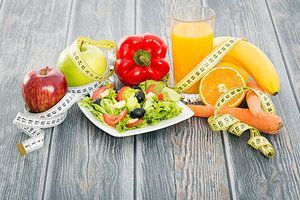TrA-2, my primary needle location, I needle 95% of the time and I think it works the best. You’ll know you have the right point location when you discover the muscle twitching when applying electric stimulation.
One Size Does Not Fit All: Exercise and Nutrition According to Your Yin/Yang Body Type
There are countless new exercise and nutrition plans out there, emphasizing the latest ground-breaking research and claiming to revolutionize the way we view health. While methods such as the Atkins and South Beach diet have their proponents and research-based components, as time passes, they slowly get pushed aside as new diet plans arise. Exercise methods are prone to the same fate, as we are led to believe by some that Crossfit is the way to go and by others that kettlebell exercises are answer. Some may argue that no pain is no gain, and others suggest exercising within our means. With so much conflicting information, it seems as if we are at the whim of research and its many guises.
Oriental medicine and it's approximately 5000-year-old history has withstood the test of time, learning and developing from its own successes and failures. Perhaps one reason why such ancient methods such as acupuncture and Oriental herbal medicine are still widely practice today is that they are based on the simple, yet practical, concept of yin and yang. This concept describes how all people, foods, and exercises have relative amounts of opposing energies called yin and yang.
The Sasang Oriental Medical approach introduces four constitution types, two Yin Types and two Yang Types. If an individual has more Yin energy, they are classified as a Yin Type, if they have more Yang energy, they are a Yang Type. The Yin Types have more yin energy, and since yin correlates with thickness, heaviness, and cold, they benefit more from yang energy foods which are lighter, spicier, and warmer. The Yang Types tend to be lighter, more active, thinner, and run hotter, so they benefit from Yin foods, which are heavier, blander, and cooling. Hence each constitution benefits from foods that balance its nature.

If research supports the intake of black garlic to prevent aging, many of those who are aging would likely give it a try. If cholesterol is an issue and our doctor recommends ingesting soy products, then who wouldn't take such "harmless" advice? These suggestions are based on the notion that one size fits all, and that everyone who wishes to feel young or lower their cholesterol can benefit. Actually, black garlic is a yang food, and although it may assist the health of a Yin Type, excessive intake may eventually cause high blood pressure for the Yang Types. Soy, on the contrary, is a Yin food, and although it may help reduce cholesterol in the Yang Types, it can cause indigestion and weight gain of the Yin Types.
Since yin correlates with the lower body and yang with the upper body, the Yin Types have a stronger lower body, while the Yang Types have a stronger upper body. Exercises that focus on the upper body are more suitable for the Yin Types, while exercises that focus on the lower body are more suitable for the Yang Types. Yin Types, being more sedentary, benefit from active exercises, such as cardio and bicycling, while the active Yang Types benefit from relaxation and exercises such as yoga, meditation, Qi Gong, and Tai Chi. Interestingly, Yin Types frequently avoid Yang exercises and Yang Types often dislike Yin exercises. Instead, the Yin Types prefer relaxing while the Yang Type feel uncomfortable and fidgety when slowing down. Hence the easy route often seems more appealing despite its negative effect on health. Research that emphasizes the importance of relaxation may give the Yin Types a reason to avoid exercise, providing an excuse to support old habits, rather than start new ones.
Not only does yin and yang apply to the muscles of the upper and lower body, but also to the bodily organs. The Yin Types have stronger lower body organs, such as the liver and kidneys, and the Yang Types have a stronger stomach and lungs. Therefore, in order to maximize their health, the Yin Types benefit from strengthening their pulmonary and digestive systems, while the Yang Types on their excretory systems. Specific foods and exercises that benefit these organs are also based on the concept of yin and yang.
Although everyone benefits from eating healthy foods and exercising, the road to health is not a "one size fits all" situation. The Sasang approach helps us fine-tune the selection of foods and exercises based on our own specific physical and emotional requirements, paving the way towards greater self-understanding and optimum health.



